- Administrator
- Albums and Singles
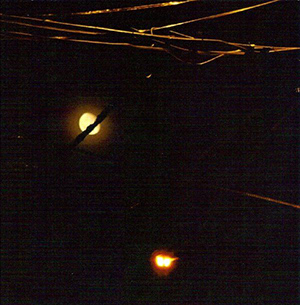 On what I assume will be his final release of the year (although with his prolific output its hard to be sure), Kevin Drumm's Wrong Intersection is a single piece with a sound that fits its somewhat sinister title and ambiguous artwork perfectly. It might not be as aggressive as some of his other works, but Drumm excels in setting an exceedingly bleak mood via a constantly shifting dynamic, and a healthy bit of extreme frequencies as well.
On what I assume will be his final release of the year (although with his prolific output its hard to be sure), Kevin Drumm's Wrong Intersection is a single piece with a sound that fits its somewhat sinister title and ambiguous artwork perfectly. It might not be as aggressive as some of his other works, but Drumm excels in setting an exceedingly bleak mood via a constantly shifting dynamic, and a healthy bit of extreme frequencies as well.
Drumm mixes hushed harsh electronics with digital interference noise in the opening minutes, conveying a creeping malignant force in its overall subtlety.His use of random sounds being disturbed by some unseen entity does a brilliant job at introducing the work.After about 10 minutes, thunderclap-like crunchy noises, shrill oscillations and what sounds like field recordings of crows have the piece taking on a clearly evil tone, leaving a feeling of isolation and utter darkness.
One thing that Drumm does extremely well on Wrong Intersection is keeping the composition continually changing and evolving.At this point, the piece builds to a harsh and violent outburst before abruptly stopping, replacing the distorted passages with a droning, ringing tone.He keeps the sound very sparse and foreboding, abruptly stopping and magnifying the buzzing harsh cacophony that follows.Drumm maintains the slow and subtle pacing, but introduces a buzzing machinery drone and oceanic swells of noise, never becoming harsh but always just on that precipice.
The buzzing works well to convey something that is ambiguous and dangerous: an unidentifiable sound that cannot be seen, conjuring an exquisite sense of dread.The intertwining electronics remain in a sparse arrangement, but interact perfectly with one another to keep that sustained creepiness.Again, Drumm backs off with the harshness, leaving an underlying bowed string like melody to sustain throughout as the noise drifts in and out.Everything then is pulled away into a paring of extreme high and low frequencies.Shrill, painful ultrasonic frequencies are blended with heavy low end, subwoofer taxing drones that at first appear amidst distorted passages, and then in an ambient, spacious context.
Most of Wrong Intersection features Drumm building up from either silence or the most minimal of tones, conveying at best ambiguity and at worst pure evil, then being pulled apart and reshaped by him.The constantly shifting dynamic and variations on sounds that stay constant throughout the album is where its strengths lie, taunting a full on assault but never actually reaching it.It is bleak and sometimes terrifying, but that is exactly what makes the album so gripping.
samples:
 
Read More
- Administrator
- Albums and Singles
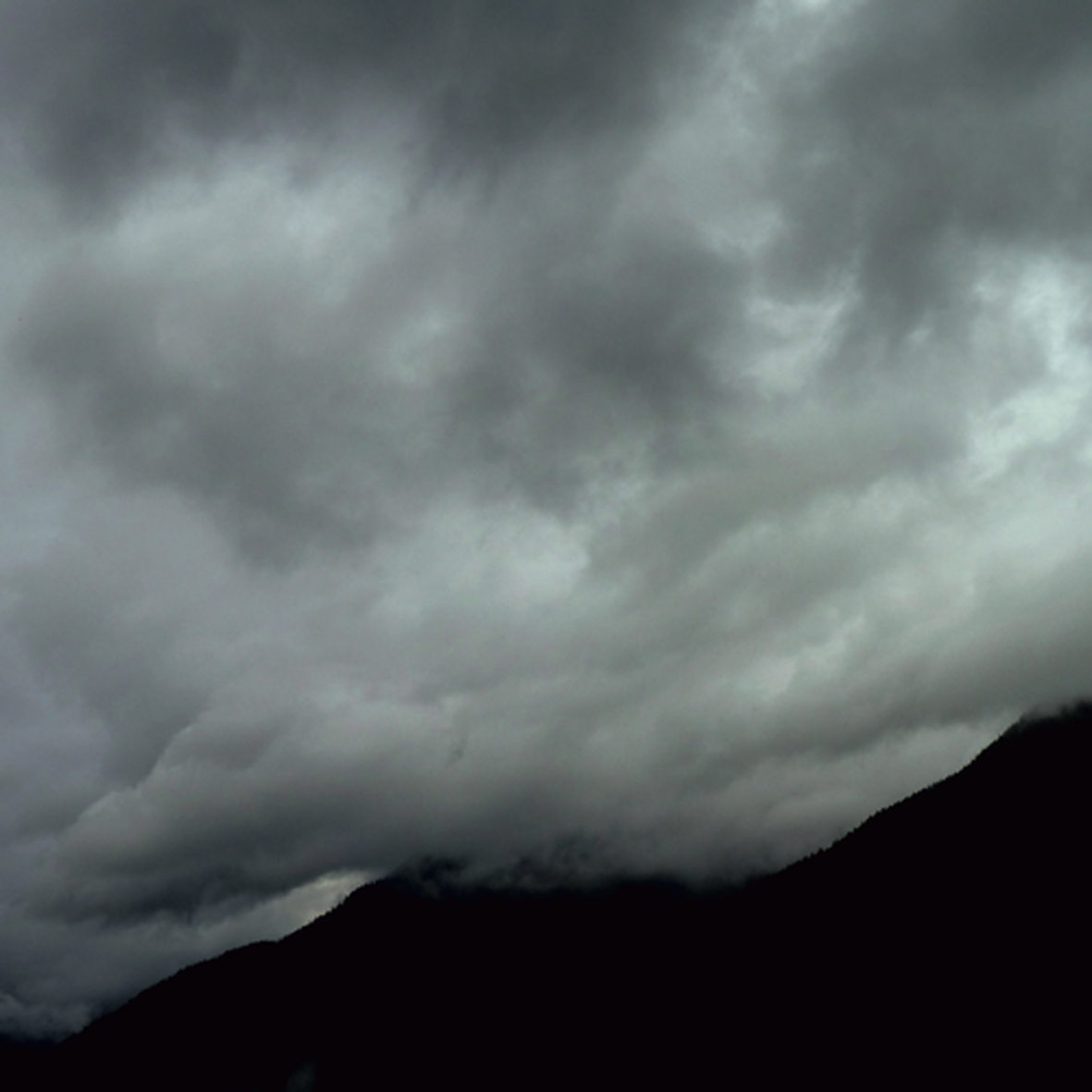 This reissue of Amir Abbey's 2011 cassette is not quite as strong as last year’s Movements of Night LP, but it certainly boasts enough inspiration to justify Students of Decay's decision to rescue it from out-of-print cassette purgatory. Although Amir covers a perplexing amount of stylistic ground and occasionally errs on the side of being too derivative, he has admittedly chosen some very cool artists to emulate (Popul Vuh, for example) and tends to excel at most of the genres that he delves into (shoegaze, drone, etc.).  That unevenness and shifting vision prevents The Silent March from quite succeeding as a complete album, but a few of the individual pieces are quite compelling.
This reissue of Amir Abbey's 2011 cassette is not quite as strong as last year’s Movements of Night LP, but it certainly boasts enough inspiration to justify Students of Decay's decision to rescue it from out-of-print cassette purgatory. Although Amir covers a perplexing amount of stylistic ground and occasionally errs on the side of being too derivative, he has admittedly chosen some very cool artists to emulate (Popul Vuh, for example) and tends to excel at most of the genres that he delves into (shoegaze, drone, etc.).  That unevenness and shifting vision prevents The Silent March from quite succeeding as a complete album, but a few of the individual pieces are quite compelling.
As far as cover art goes, Amir could not possibly have chosen have chosen anything more representative of his sound than a cloud.  While he drifts somewhat freely in style throughout The Silent March, the unifying theme is always that the music is slow-moving, soft-edged, shape-shifting, and somewhat dark.  The metaphor could even be extended further to note that these seven pieces also vary in density and in the amount of light that they let through.  Also, they tend to conceal things as well.  I was tempted to even add that The Silent March's missteps occur almost every time Abbey departs from his "I want to sound like a cloud" aesthetic, but he thankfully snuck in a few divergent successes that derailed my half-assed theory.  In any case, Amir is at his best when he goes with a slow-motion engulfing roar of shoegaze guitar noise that gradually reveals some kind of melancholy loop or chord progression.  The album reaches its zenith with the opening one-two punch of "Outside" and "Come Down Slowly," which does exactly that: the roar of "Outside" gradually segues into the warped, hallucinatory synth dirge of "Come Down."  Amir is quite fond of segues, incidentally: all of Silent March's songs bleed into one another.
Another highlight is the very different "Her Spirits," which sounds like an unplugged, funereal Codeine with proggy tendencies and a completely unexpected penchant for Indian instrumentation and flutes.  It is most definitely a dirge, but it maintains a weirdly hypnotic pulse and does a nice job of layering subtle psychedelic touches.  Amir then racks up yet another highlight at the album's end with the Popul Vuh pastiche of "Silent March II," which strongly resembles one of the variations of the Aguirre theme.  The other three pieces are all likable in their own ways, but tend to be too short or too one-dimensional to leave a strong impression, aside from the bleak "Eternal," which approximates a black-metal-damaged Explosions in the Sky.  Abbey was still finding his voice at this stage, I suppose, as he seemed a lot more focused in his vision with its follow-up.  As such, The Silent March is not the ideal starting place for Secret Pyramid, but it is successful often enough to appeal to existing fans who find themselves thirsty for more (especially since Amir is not an especially prolific guy).
Samples:
 
Read More
- Administrator
- Albums and Singles
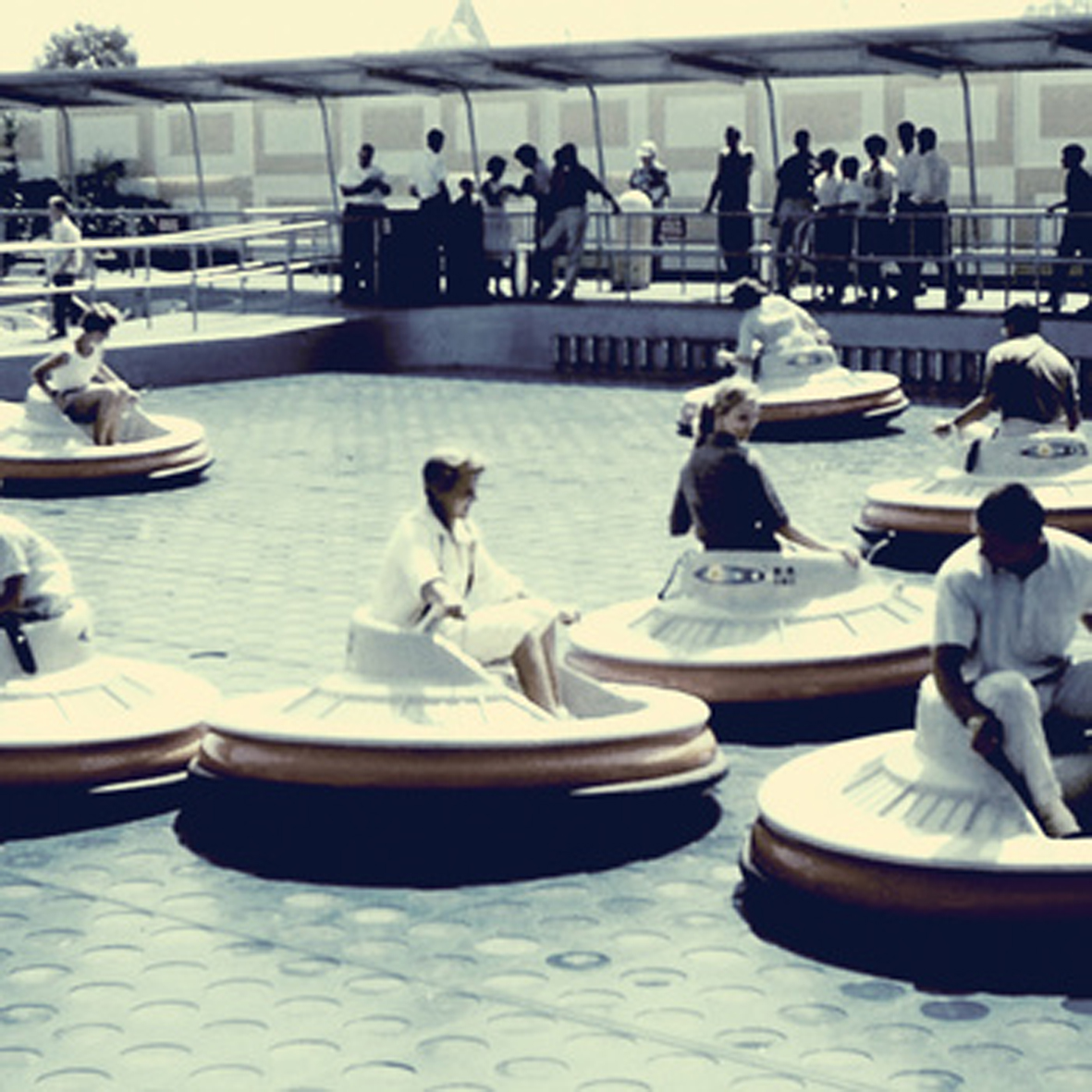 Benjamin Finger's fractured and skittering first release for Digitalis is not entirely without precedent, as he previously dabbled with techno beats a bit on 2010's For You, Sleepsleeper, but it is still quite a departure from the dreamy, hallucinatory soundscapes that I normally associate with him.  As far as departures go, I would say Mood Chaser is quite a good one, as Finger successfully translates his skewed psychedelic sensibility into a disorienting and kaleidoscopic dance party.  Though it is perhaps a bit too over-caffeinated to quite stand with his best work, this is certainly an exuberant, weird, and fun effort in its own right.
Benjamin Finger's fractured and skittering first release for Digitalis is not entirely without precedent, as he previously dabbled with techno beats a bit on 2010's For You, Sleepsleeper, but it is still quite a departure from the dreamy, hallucinatory soundscapes that I normally associate with him.  As far as departures go, I would say Mood Chaser is quite a good one, as Finger successfully translates his skewed psychedelic sensibility into a disorienting and kaleidoscopic dance party.  Though it is perhaps a bit too over-caffeinated to quite stand with his best work, this is certainly an exuberant, weird, and fun effort in its own right.
The best description of Mood Chaser that I can come up with is that it is like being talked into going out to a club by some friends even though I have an extremely high fever and no longer have a firm grasp on either reality or the passing of time.  Also, the DJ at the club has been unknowingly drugged and is sleepily, deliriously changing tempos abruptly, playing songs backwards, choosing the wrong speed, and accidentally playing multiple songs on top of one another.  The overall effect, of course, is quite surreal and disorienting in the extreme: one moment I am happily dancing to a thumping house beat, but in the next, time has suddenly slowed to a crawl and I feel like I am underwater or floating through space.  It is quite a neat illusion, though it tends to work best when Finger transports me furthest from the dance floor.  From a listenability standpoint, the album highlight is probably "Nicotin Weather," which is a largely beatless piece built upon pulsing, droning synths and a bleary haze of sometimes chopped and looped choral vocals.
From a sheer lunacy standpoint, however, Mood Chaser offers quite a few highlights of a different sort.  "Elfin Geezer" is probably the most deranged of the lot, as it sounds simultaneously backwards, skipping, hyperactive, and possibly falling apart, then throws an insistent acoustic guitar strum into the mix.  Other stand-outs include the stuttering, underwater electropop of "Odd Infinitum;" the gnarled, dissolving techno of "Saguaro Cactus," and the lysergic, everything-happening-at-once entropy of the opening "Dwarf Palms."  In fact, every piece on Mood Chaser is quite strange and compelling in some way, as Finger admirably avoided both any filler and any oasis of relative normalcy.  As a whole, this is a remarkably well-crafted album: Benjamin always maintains a propulsive sense of momentum and displays an impressive intuition regarding how far out he can go or how long a given theme should last.  While it is not a particularly short album, it feels like one in the best possible way–kind of like a great ride at an amusement park ("Wow- it's over already?  Let's do it again!").Although it lacks the sustained, enveloping beauty that characterizes Finger's best work, such comparisons are somewhat irrelevant, as Mood Chaser is chasing after something different entirely.  It is hard to say exactly what that something might have been, but it certainly makes for a wild and entertaining departure: this is Benjamin Finger’s party album.
 
Read More
- Administrator
- Albums and Singles

Black Mass Rising presents Peter "Sleazy" Christopherson Live at L'Étrange Festival 2004
A live homage to Derek Jarman, Sleazy performed a soundtrack to Jarman's The Art Of Mirrors at this Paris performance shortly before the end of Coil.
Limited 500 Copies Double LP gatefold !
PRESALES NOW ! OUT on 19TH JANUARY 2015 !
Get your copy now !
Read More
- Administrator
- Albums and Singles

Else Marie Pade's Electronic Works 1958-1995 is a heavy-duty three-LP set which was restored, mastered and cut at Dubplates in Berlin under the watchful ears of curator Jacob Kirkegaard. These monumental works are presented, for the first time, pressed on audiophile grade heavy duty vinyl where they belong. Audiophile grade 3LP is pressed in an edition of 500 copies.
"The sounds outside became concrete music, and in the evening I could imagine that the stars and the moon and the sky uttered sounds and those turned into electronic music." Else Marie Pade
Else Marie Pade (born 1924 in Aarhus, Denmark; currently living in Copenhagen) is a precious golden gem in the world of contemporary electro-acoustic music. She is a true pioneer of Musique Concrete and electronic music recorded on tape. She is Denmark's first lady of electronic music and her piece "Syc Cirkler" (Seven Circles) became Denmark's first electronic piece to be performed on the radio.
EMP's search for sound began in early childhood when she was isolated in her bed for long periods of time due to illness. There she would lie and listen to the sounds around her just as she did years later when she was imprisoned for spying on Nazi compounds in Arhus. Once released from prison she became a piano student at the Royal Danish Conservatory in Copenhagen but chose to instead pursue the nuances of her inner sound world after hearing Pierre Schaeffer in 1952. She began studying with him not too soon thereafter. Her first electronic composition premiered in 1955.
More information can be found here.
Read More
- Administrator
- Albums and Singles

Gorgeous electronic collaboration between Jacob Kirkegaard and Else Marie Pade. Urgent CD reissue of the sold out LP edition. This CD includes a beautiful 15 minute bonus track not included on the LP release.
Else Marie Pade (born December 2, 1924 in Aarhus) is a Danish composer who pioneered electronic and concrete music in Denmark beginning in 1954. Pade was active in the resistance movement during the Second World War, and was interned at the Frøslev prison camp from 1944 till the end of the war. An archival collection of Else Marie Pade's electronic work is now available on Important Records.
Danish artist Jacob Kirkegaard's works are focused on scientific and aesthetic aspects of sonic perception. He explores acoustic spaces and phenomena that usually remain imperceptible to the immediate ear. Kirkegaard's installations, compositions & photographs are created from within a variety of environments such as subterranean geyser vibrations, empty rooms in Chernobyl, a rotating TV tower, and even sounds from the human inner ear itself.
Based in Berlin, Germany, Kirkegaard is a graduate of the Academy for Media Arts in Cologne. Since 1995, Kirkegaard has presented his works at galleries, museums, venues & conferences throughout the world. His sound works are primarily released by the British record label Touch and he is a member of the sound art collective freq_out.
"For all the scientific rigour to Kirkegaard's research into the sonic possibilities of various materials, his work reveals an underlying fascination for the mysteries and myths embedded in them. His work channels an access to an inner world." Anne Hilde Neset, The Wire, 07/09
Despite an age difference of 51 years, Else Marie Pade and Jacob Kirkegaard speak a similar musical language and are prominent listeners and communicators of sounds that we tend to overhear. For the first time these two pioneers are collaborating on a new work: SVÆVNINGER investigates the variations that one can hear when sound waves collide. Both artists have previously worked on this phenomenon; Jacob Kirkegaard in his work Labyrinthitis (2007) and Else Marie Pade in her work "Faust Suite" (1962). For their new joint piece SVÆVINGER, they remixed some of Pade's early (and hitherto unreleased) sound experiments with some of Kirkegaard's recordings from his own ear, thus leading the audience straight into the undiscovered labyrinths of their own hearing.
More information can be found here.
Read More
- Administrator
- Albums and Singles
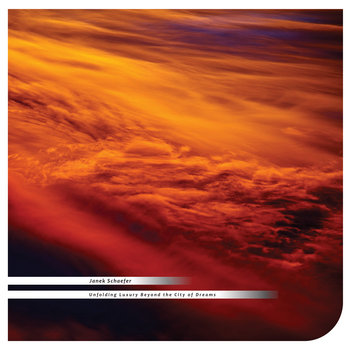
White Lights of Divine Darkness (for Sir John Tavener) 7:34
"By chance I composed this for my brother-in-law the day he passed away. In recent years he had seen the white lights of heavens gate, but returned, and became fascinated by what he called God’s divine darkness in this lifetime."
Unfolding Honey 6:06
"A track from my exhibition soundtrack 'Future Beauty, 30 years of Japanese fashion' held at The Barbican Gallery, London. The exhibition featured some amazing folded garments by Issey Miyake, that inspired the unfurling fabric feeling of the composition."
Luxury 3:00
"An orchestral drone piece featuring an old French lady singing to her cats with an extra celestial chorus."
Skyline Ascending 3:28
"A Carpenters LP piano loop is layered again and again over a high sky recording, which was recorded using a helium balloon floating in the clouds over the city, with raindrops."
Coda (for Sir John Dankworth) 5:00
"In my early teens, I used to attend week long music camps, in tents, within the grounds of Sir John Dankworth's home with Cleo Laine. I used to know them, and composed this piece with one of their vinyls on the day I heard he died. The installation premiered at the Sydney Cooper Gallery in Canterbury, broadcasting a 3-channel version to six '50s radios."
The City of Dreams 8:28
"Theme tune for the opening of 'The Mill: City of Dreams' a site-specific theatre production in a deserted mill in Bradford. Piano motif recorded live with my twin-arm turntable, additional overlays recorded with Mark Robinson on his old family piano."
Beyond 6:30
"The Carpenters return, sliding piano loops through recordings made in Grand Central Station at closing time when the vast hall was deserted, and the full majesty of the acoustic space could be appreciated. Stilettos pass by forming polyrhythms, as the last train announces its departure..."
More information can be found here.
Read More
- Administrator
- Albums and Singles
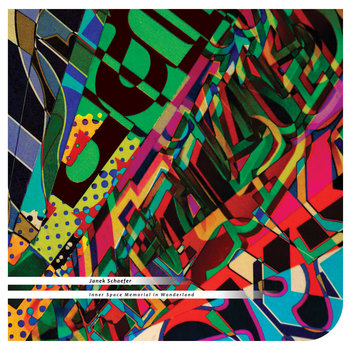
Inner Space Memorial [for J.G.Ballard] 20:57
"Over the years, I have produced a number of works in praise of the ideas of J.G Ballard. He lived just over the river from my home. While reading his autobiography in 2009, I was wandering how to go and say hello, but found out I was too late. I produced a monument in honour of him called the 'Inner Space Memorial,' part of my Retrospective at the Bluecoat in Liverpool. A pair of speaker cones were turned around to play back into the void of their cabinets. An epitaph for a great mind."
Wonderland 20:00
"'Wonderland' is the finale of my exhibition soundtrack to "Asleep at the wheel...". A work that questions where our culture is heading further down the highway ahead. A single majestic daydream that drives you forwards as reality undertakes you. Location recordings were made in the middle of the night on a footbridge over the M3, at the end of Ballard's street. I was fascinated to work out that while he was writing Crash and Concrete Island, the six lane motorway was being built right past the front of his home. Ideal music for when you need to stay awake on the road!"
More information can be found here.
Read More
- Administrator
- Albums and Singles
 Nazoranai's second album is a curious tabula rasa that makes any kind of quasi-objective opinion nearly impossible, as the baggage and expectations of the individual listeners are far more important than the actual sounds that this trio conjures up.  Though both Stephen O'Malley and Oren Ambarchi are physically present, their distinctive aesthetics are most definitely not: this is Keiji Haino's show and it is an entirely improvised one.  Charitably viewed, that means spontaneous, volcanic, and wildly unpredictable free-rock heaven from one of the genre's most singular icons.  Viewed by me, The Most Painful Time is an indulgent, flawed, quixotic, and intermittently compelling attempt to recapture the wide-eyed freedom and possibility of psych rock's formative years.
Nazoranai's second album is a curious tabula rasa that makes any kind of quasi-objective opinion nearly impossible, as the baggage and expectations of the individual listeners are far more important than the actual sounds that this trio conjures up.  Though both Stephen O'Malley and Oren Ambarchi are physically present, their distinctive aesthetics are most definitely not: this is Keiji Haino's show and it is an entirely improvised one.  Charitably viewed, that means spontaneous, volcanic, and wildly unpredictable free-rock heaven from one of the genre's most singular icons.  Viewed by me, The Most Painful Time is an indulgent, flawed, quixotic, and intermittently compelling attempt to recapture the wide-eyed freedom and possibility of psych rock's formative years.
The Most Painful Time... opens with "You Should Look Closely…," a piece which instantly conveys absolutely everything that anyone would need to know about the album.  Most significantly, Ambarchi and O'Malley are relegated to drums and bass, respectively.  Ambarchi, for his part, is a surprisingly adept drummer who keeps a tom-heavy groove going that resides somewhere between doom metal and free-jazz.  Stephen O'Malley, on the other hand, is more or less reduced to a vague rumble and is quickly forgotten.  That is probably the single most frustrating aspect of the entire album: it sounds exactly like a live recording minus any crowd sounds, so the drums are reduced to a spirited clatter and the bass to a mere abstraction.  The absence of a visceral groove almost completely castrates the album for me, as I can hear that Oren is putting on quite a wild performance and that actually being in the room during the recording was probably face-melting, but I cannot feel any of that.  Consequently, the focus is almost entirely on Keiji's mixture of incendiary guitar squall, occasional synth noises, and somewhat arbitrary and unmelodic singing.
I mostly could do without the latter, though his isolated, echo-laden vocals in the uncharacteristically song-like "Will Not Follow Your Hoax Called History" are both effective and affecting.  For the most part, however, he just seems to howl or moan into the microphone when the mood strikes him.  As for his guitar playing, it is all over the place (albeit in a good way).  Sometimes he solos in a vaguely conventional "rock" way, sometimes he plays a restrained and idiosyncratic strain of the blues, and sometimes he locks into something that sounds like a mutant, stuttering approximation of a Sabbath riff (as he does in the title piece).  Mostly, however, he just builds towards a messy, effects-heavy firestorm of guitar noise, which is the area in which he truly excels.  While I enjoy several of Ambarchi's grooves, the primary appeal of The Most Painful Time... truly (and almost solely) lies in Haino's unhinged guitar eruptions.  The rest of the album (for me, anyway) is basically just waiting for them to happen.
Aside from the "live album" fidelity and gutted low-end, I was also exasperated by how "off the cuff" this album feels.  I am willing to accept that Nazoranai prize spontaneity and passion above all else, but I cannot overlook the fact that this trio's potential far exceeds what they produced: it could have been extremely cool to hear a genuine collaboration recorded in a real studio with overdubbing, more structure, more presence, and more editing.  Or maybe the group would have just imploded instantly–regardless, the possibilities certainly nag at me.  Still another exasperating aspect to The Most Painful Time... is that it arrived about 40 years too late to make a substantial impact: had it come from an earlier era, Nazoranai would probably enjoy a mythic stature similar to that of Les Rallizes Denudes and deservedly be the subject of much enthusiastic prose from Julian Cope. In 2014, it is still an admirably messy, visceral, and explosive return to a wilder, freer mindset, but it is far too much of a pale shadow of the actual performance to offer much appeal to those who are not already Keiji Haino fans.
Samples:
- You Should Look Closely Those Shattered Spells Never Attaining Embodiment as Prayer They Are Born Here Again
- Will Not Follow Your Hoax Called History
- The Most Painful Time Happens Only Once Has It Arrived Already..?
 
Read More
- Administrator
- Albums and Singles
 In the past few years, Mike Griffin has been perfecting his own personal blend of musique concrete and harsh noise in his suburban basement studio. His output has appeared mostly in the form of limited tapes and CDRs, but Pilot's Salt is his first fully-fledged LP release. Pared with the recently released Tovarich tape, both releases make for excellent introduction to his ever-growing discography.
In the past few years, Mike Griffin has been perfecting his own personal blend of musique concrete and harsh noise in his suburban basement studio. His output has appeared mostly in the form of limited tapes and CDRs, but Pilot's Salt is his first fully-fledged LP release. Pared with the recently released Tovarich tape, both releases make for excellent introduction to his ever-growing discography.
Retrograde Tapes/Fabrica Records
The two pieces that make up the first half of Pilot's Salt are different in their overall sound but are tied together with certain repeating motifs.What sounds like clattering trains and dying machinery stretch between both pieces, but the first composition, "Recombinant Field", focuses on Griffin's use bleeping vintage synth pulses and feedback that bounces between restrained and piercing.On "Sufis Wandering the Causeway" many of those same sounds appear, but comparably the piece is more vast and expansive, letting the sounds ring out clearly in a hollow space.
On the other side, "Pilot's Salt" functions as a brief prelude to the remainder of the record, in the form of three minutes of out of tune radio noise, undulating bass and frozen car horn like drones.It fades out quick and leads right into "Pulverized Concrete on the Rim of a Coffee Cup," a more menacing leviathan of buzzing electronics and a bowed string-like blast of noise.It largely stays within the sparser structure that characterized "Sufis" but over a longer duration.Crackling textures and sweeps of noise keep things creepy, with the occasional jarring outburst to function nicely as a jump scare tactic.
samples:
 The material that makes up Tovarich seems to be culled from the same sessions as Pilot's Salt, and thus works as a brilliant accompanying recording."Double Wide Hippocampus" sees Griffin bringing back the car horn sounds again, mixed in with idling synth drones and pitch bent tape squeals.It keeps a rising/falling dynamic, and ends in a brilliantly bleak industrial din.In comparison, "Analog Shock Technique" is simpler and minimalist.Tentative electronic buzzing and loads of echo and delay result in a spacey, more psychedelic sound.
The material that makes up Tovarich seems to be culled from the same sessions as Pilot's Salt, and thus works as a brilliant accompanying recording."Double Wide Hippocampus" sees Griffin bringing back the car horn sounds again, mixed in with idling synth drones and pitch bent tape squeals.It keeps a rising/falling dynamic, and ends in a brilliantly bleak industrial din.In comparison, "Analog Shock Technique" is simpler and minimalist.Tentative electronic buzzing and loads of echo and delay result in a spacey, more psychedelic sound.
On the other side of the tape, the 15 minute "Fossilized Car" is all guttural, scraping scree and rudimentary synthesizer progressions.It lurches along like some primordial beast but never stays still, constantly blending the individual sonic elements as the composition trudges along.It brings back the slowly dying machine vibe mixed with the spacy sci-fi outbursts and noise blasts, resulting in a piece that is sometimes jerky and jumpy, but brilliant nonetheless.
Mike Griffin's work as Parashi has shown different characteristics on previous releases; sometimes harsh, sometimes psychedelic, but both Pilot's Salt and Tovarich represent some of his most consistent and fully realized work to date.By no means was his work lacking in the past, but this pair is rich with alternating harshness, beauty, and deep studies of sound and sonic textures, and done brilliantly.
samples:
 
Read More
- Administrator
- Albums and Singles
Hamburg's Marc Richter has been busy since his last Type appearance (2009's genre-bending and critically acclaimed Alphabet 1968). Aside from helming the prolific Dekorder imprint, he's put out a number of musical curios, including 2012's excellent film soundtrack EARTH. Now Richter is back with Alphabet 1968's proper followup, a sprawling double album pieced together with crumbling samples, vocal snippets and an arsenal of noise generators and filters.
Richter's material has always been characterized by an air of surrealism, but it's never been more obvious than on the pulsing, chattering opener "Human Gidrah" or in the delirious fractured pop of "Hands." There are real songs in hidden somewhere, but disintegrated by Richter's sound manipulation techniques and dissolved into soupy extended drone marathons. The centerpiece is undoubtedly "Is Nowhere," which builds slowly over 20 minutes with rumbling organ sounds and buzzing filters, never budging your attention for a second.
Black To Comm is a deeper, more challenging record than its predecessor, but one which repays the patient listener. Richter's dusty, unique sound has never sounded more well-honed and pointed, and it's a patchwork of ideas and fragments that only improves over time.
More information can be found here.

Read More

